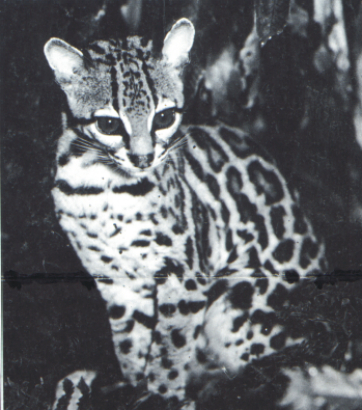A BROKEN HOME

Every year, 50 million acres of rainforest an area the size of England, Wales and Scotland combined are cut down.
Primary
rainforests in India, Bangladesh, Sri Lanka and Haiti have been lost entirely, with the Ivory Coast fast approaching
the same fate. The result: this Margay (pictured above) and thousands of other species that call these forests home
are teetering
on the brink of extinction.
Tropical forests help regulate the Earth's climate. And they shelter one half of all Earth's species unique
life forms that give us priceless medical, industrial, and agricultural benefits. [End of Nature Conservancy information]
The Margay pictured above looks very much like a common housecat that many people
have for pets. Of course this Margay is a wild animal and depends entirely on it's habitat for it's life. Without it's
native rainforest to live in, it will suffer greatly, wandering around aimlessly looking for a scarcity of food, and slowly
dying of hunger.
Every second of every day, a slice of rainforest the size of a football field is mowed down. Thats 86,400 football fields
of rainforest per day, or over 31 million football fields of rainforest lost each year.
So what can be done? For one thing you can go to the Nature Conservancy's website to find out how you can help them
(link at top of page).
Another thing is to do is to become more conscious of our relationship with Nature and change our lifestyle to be more in
harmony with the other life on earth. There is much information related to this on the
EarthSave
If large numbers of people lived the Garden of Eden lifestyle, we would automatically be allowing these animals to
flourish in their habitat. For example if everyone on Earth lived the Garden of Eden lifestyle, it would require less
than 10% of the earth's surface to live that way!
Even if we all simply became vegan vegetarians, believe it or not, this would
free up over half of the Earth's surface for wildlife habitats to recover and once again support native animal species.
It is amazing to understand that to truly love oneself to the fullest (to live the Garden of Eden lifestyle), we
simultaneously love the
wild animals by allowing them more space for their habitat! Certainly something to think about, right?
For more detailed information on how much land the Garden of Eden lifestyle in the U.S. would require,
click HERE. For more information on how much land the Garden of Eden lifestyle in the WORLD would require,
click HERE.